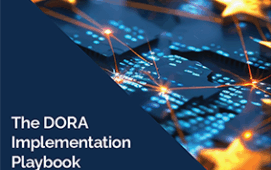
By Amrik Thethi, chief technology officer, Torstone Technology
Most of us will agree that trying to get fit after a period of inactivity can be a challenging endeavour. What’s more, those who do not commit to making fundamental lifestyle changes on a long-term basis will most likely find any physical gains short lived. This analogy could be applied to the financial services world, where established firms previously used to repairing or patching up back-office systems only after they had broken down or become defunct are now looking to adopt the first available solutions, often in an attempt to fend off competition from new fintech rivals. Yet a sudden burst of ‘fitness mania’ will not make older banks feel younger; they need a different, longer-term approach to their back-office processing.
Regulation
The need to maintain an efficient back office has never been more critical. Regulation has set new benchmarks for the timeliness, volume and depth of performance in the back office, straining the processing power of many older operations. Indeed, the ‘MiFID II effect’ has led to an increased focus on price transparency in the buy-side, consequently challenging sell-side firms to demonstrate the value of their services. As margins dwindle in the front office, differentiating the end-to-end service and driving efficiencies across the value chain becomes key. With profit margins so thin, the cost of operational failure can be extremely damaging.
But far from being a nail in the coffin of older firms, this new environment should be a call to action. There are two aspects to successfully resolving the aging back-office crisis; both of which can be found built into the firms who appear athletic and nimble.
Technology development model
The first is adopting the right technology development model. The use of methodologies such as DevOps and Agile can dramatically change the way technology can be provisioned to banking operations. These models involve a feedback loop during the user engagement stage that ensures their demands are factored in during the development and testing process. This results in systems that are tailored for the specific requirements of a firm. The application of these methodologies by fintechs is well-attested and the fail-fast model of discarding non-functioning systems, which is integral to both DevOps and Agile, allows firms to be more efficient than their competitors.
Building a feedback loop requires technology teams to have a far greater engagement between testers and developers, as opposed to older development models such as the ‘waterfall’ methodology that involved a linear and sequential ‘cascading’ process. The ‘waterfall’ model has distinct goals for each phase of development, which means that once one phase is completed, the development proceeds to the next phase, all based on the original requirement. Any adjustments would have to be made after the process is complete. According to a recent survey by the market research firm DORA, teams who use a continuous deployment model as opposed to a ‘waterfall’ model reduce patching and fixing time by 22%, which gives them more time to spend on the development of new features.
Further, Agile and DevOps methodologies enable back-office technology teams to make frequent upgrades to systems. This makes them more flexible and adaptable to client needs. For example, an Agile team may be able to build a new feature required by a bank’s customer in a matter of days instead of months. This helps the bank onboard new clients faster and provide better service overall. A well-serviced customer is both gained and retained more easily.
What’s more, setting that level of service applies competitive pressure on other providers, letting the firm that uses agile methodologies set the pace for the market. The ability to develop, test and roll out systems quickly also enables firms to respond more easily to market volatility, which may be a result of regulatory change or increased market activity.
New technologies
The second aspect is the employment of new technologies. Using virtualised, cloud-based systems, a bank can roll out new capabilities built by third parties without the need to totally refresh its own talent pool or technology stack.
Where data lakes need to be sorted through to support regulatory reporting or risk management, the use of third-party systems built under the Agile development model can enable a fast deployment using tried and tested – and importantly, flexible – tools that make the process painless and do not tie the firm to a static technology platform.
Lastly, as distributed ledger and machine-learning technologies mature, they can be applied to enhance the level of automated processing in the back office, by supporting the flow of information or by modelling the process itself.
Employing a continuous development model reduces operational risk during the change process; the aches and pains of what is, in effect, a fitness regime. The key to fitness is consistency. By exercising a little and doing so regularly, banks will build up muscle and agility over time, and reduce the risk of straining their proverbial backs. But if they try to do a lot of work after being sedentary, the risk of injury is high. Moreover, they do not have to overcome the fear of failure, which often sits behind inaction. Fitness breeds confidence, in the bank and its customers.
Subscribe to our newsletter




